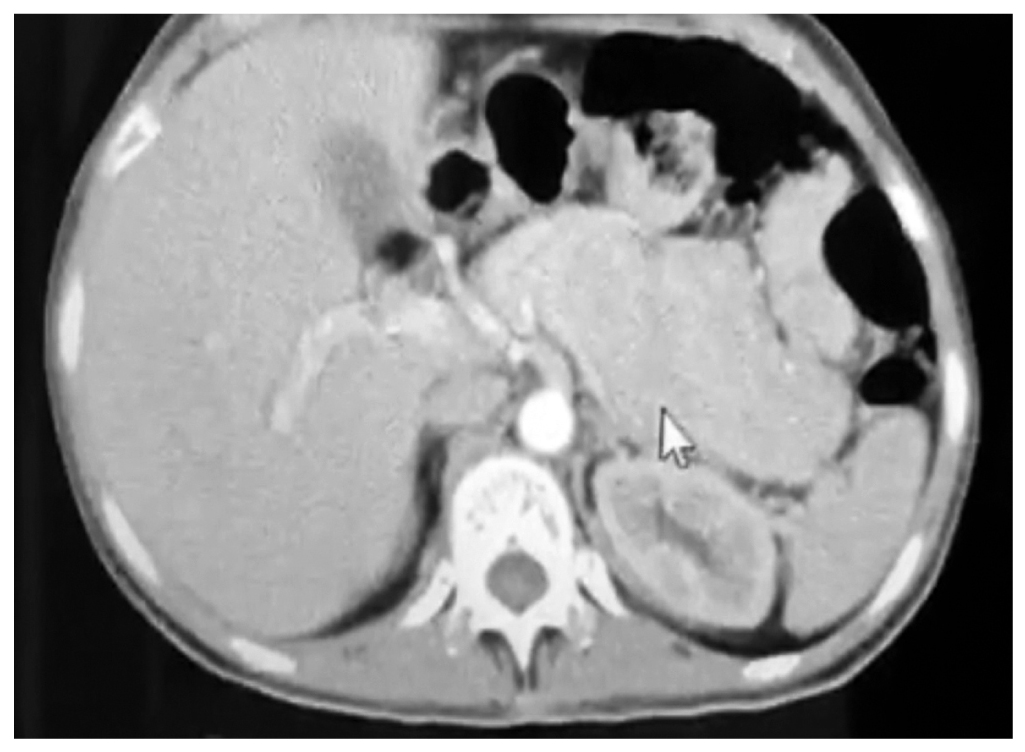Pancreatic glucagonoma: observing the skin can lead to diagnosis
DOI:
https://doi.org/10.22516/25007440.403Keywords:
Glucagonoma, Pancreatic tumor, Necrolytic migratory erythemaAbstract
This is a case report of a patient with a pancreatic tumor, known as glucagonoma, whose diagnosis was suspected because of skin manifestations which led to performing a CT scan, finding the mass. She underwent surgery with satisfactory results.
Downloads
References
Sarr MG, Murr M, Smyrk TC, Yeo CJ, Fernández-del-Castillo C, Hawes RH, Freeny PC. Primary cystic neoplasms of the pancreas. Neoplastic disorders of emerging importance-current state-of-the-art and unanswered questions. J Gastrointest Surgí. 2003;7(3):417-28.
http://doi.org/10.1016/s1091-255x(02)00163-4
Adsay NV. Cystic neoplasia of the pancreas: pathology and biology. J Gastrointest Surg. 2008;12(3):401-404.
http://doi.org/10.1007/s11605-007-0348-z
Braverman IM. “Cutaneous manifestations of internal malignant tumors” by Becker, Kahn and Rothman, June 1942. Commentary: Migratory necrolytic erythema. Arch Dermatol. 1982;118(10):784-798.
http://doi.org/10.1001/archderm.118.10.784
McGavran MH, Unger RH, Recant L, Polk HC, Kilo C, Levin ME. A glucagon-secreting alpha-cell carcinoma of the pancreas. N Engl J Med. 1966;274(25):1408-1413.
http://doi.org/10.1056/NEJM196606232742503
Yao JC, Eisner MP, Leary C, Dagohoy C, Phan A, Rashid A, Hassan M, Evans DB. Population-based study of islet cell carcinoma. Ann Surg Oncol. 2007;14(12):3492-500. http://doi.org/10.1245/s10434-007-9566-6
Kindmark H, Sundin A, Granberg D, Dunder K, Skogseid B, Janson ET, Welin S, Oberg K, Eriksson B. Endocrine pancreatic tumors with glucagon hypersecretion: a retrospective study of 23 cases during 20 years. Med Oncol. 2007;24(3):330-7.
http://doi.org/10.1007/s12032-007-0011-2
Tierney EP, Badger J. Etiology and pathogenesis of necrolytic migratory erythema: review of the literature. MedGenMed. 2004;6(3):4.
van Beek AP, de Haas ER, van Vloten WA, Lips CJ, Roijers JF, Canninga-van Dijk MR. The glucagonoma syndrome and necrolytic migratory erythema: a clinical review. Eur J Endocrinol. 2004;151(5):531-537.

Downloads
Published
How to Cite
Issue
Section
License
Aquellos autores/as que tengan publicaciones con esta revista, aceptan los términos siguientes:
Los autores/as ceden sus derechos de autor y garantizarán a la revista el derecho de primera publicación de su obra, el cuál estará simultáneamente sujeto a la Licencia de reconocimiento de Creative Commons que permite a terceros compartir la obra siempre que se indique su autor y su primera publicación en esta revista.
Los contenidos están protegidos bajo una licencia de Creative Commons Reconocimiento-NoComercial-SinObraDerivada 4.0 Internacional.


| Article metrics | |
|---|---|
| Abstract views | |
| Galley vies | |
| PDF Views | |
| HTML views | |
| Other views | |














